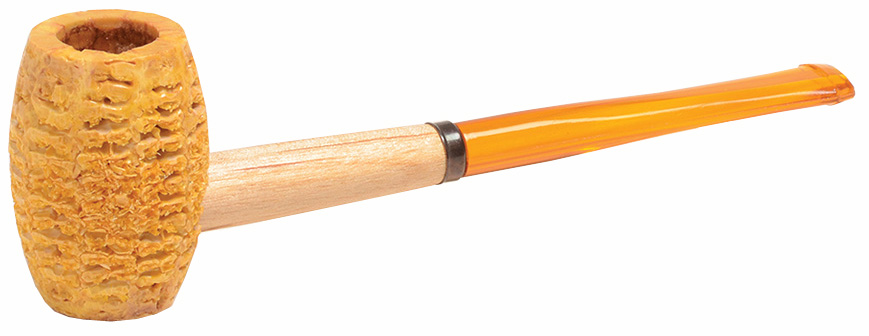Mark Twain’s Adventures of Huckleberry Finn has long been hailed as a cornerstone of American literature, celebrated for its humor, social critique, and memorable characters. Central to the novel’s charm is the character of Huckleberry Finn himself, whose image has been immortalized through countless illustrations over the years. One distinctive feature often depicted in illustrations of Huck is his ever-present corncob pipe, a symbol that has come to be closely associated with his carefree, adventurous spirit.
If you search Huckleberry Finn illustrations on Google Images, you’ll be met with a vast array of artistic interpretations. The visual representation of Huck, and particularly his corncob pipe, reflects not only the era in which these images were created but also the evolving nature of Twain’s character through the lens of different illustrators. This article explores the role of Huck’s visual identity, focusing on the symbolism of the corncob pipe and the artistic variations of his portrayal.
A Journey Through Time: Huck in Early Illustrations
When Adventures of Huckleberry Finn was first published in 1884, E.W. Kemble was the illustrator chosen to bring Twain’s words to life. Kemble’s illustrations are some of the earliest depictions of Huck, and they helped shape the initial public perception of the character. In these early renditions, Huck is often portrayed as a scruffy, mischievous boy—barefoot, ragged clothes, and, most notably, with a corncob pipe in hand.
Kemble’s decision to include the pipe, even though Huck is described as being just a child, was a nod to the character’s rebellious, rough-and-tumble lifestyle. The corncob pipe, an affordable and accessible tool for smoking in the 19th century, was a symbol of Huck’s independence from societal norms and his close connection to the working-class world around him.
As you browse through Kemble’s illustrations on Google Images, Huck’s corncob pipe serves as a reminder of his unconventional upbringing. It symbolizes his desire to live free from the constraints of “civilized” society and to forge his own path, even if that means adopting habits that, at the time, were not considered suitable for children.
The Corncob Pipe: A Symbol of Freedom and Rebellion
The corncob pipe is more than just a visual accessory in these illustrations; it represents Huck’s individuality and defiance of societal expectations. In 19th-century America, children were expected to adhere to strict moral codes, attend school, and eventually integrate into the adult world of responsibility and decorum. Huck, however, rejects these conventions at every turn, choosing instead to run away from “civilized” life and head out on the Mississippi River.
The pipe is a small but powerful symbol of Huck’s broader rebellion against the constraints imposed on him by his guardian, Miss Watson, and the society she represents. Huck’s adoption of the pipe, typically seen as a grown-up habit, reflects his desire to act independently of adult authority, even though he’s still very much a child.
Later illustrators, including Norman Rockwell and Thomas Hart Benton, would continue to include the corncob pipe in their portrayals of Huck, reinforcing its symbolic importance. A Google Images search will reveal various illustrations from these artists, each bringing a different style and interpretation to Huck’s appearance but preserving the rebellious essence captured in the original drawings.
Changing Perceptions: Huck in 20th-Century Illustrations
In the 20th century, Huck’s visual representation shifted, reflecting the changing cultural landscape. As America evolved, so too did its attitudes toward smoking, childhood, and societal norms. Illustrators like Rockwell, whose works can be found on Google Images, took a more nostalgic and sentimental approach to Huck’s character. While the corncob pipe was still present in many depictions, the focus shifted from rebellion to a sense of innocence and adventure.
Rockwell’s illustrations, for instance, often portray Huck as a wide-eyed, curious boy, far removed from the rough-and-tumble, pipe-smoking child depicted by Kemble. The corncob pipe became more of a nostalgic symbol—a reminder of a simpler time when boys could explore the world with little supervision or concern for societal expectations.
As you browse through the results on Google Images, you’ll notice that modern-day interpretations of Huck Finn often omit the corncob pipe altogether. This shift reflects a broader cultural movement away from glorifying smoking, especially in children’s literature and media. In many contemporary illustrations, Huck is still depicted with his signature ragged clothes and adventurous spirit, but the pipe has been removed in favor of a more wholesome portrayal.
The Role of Technology: Google Images and Accessibility of Huck Finn Illustrations
The availability of these illustrations on platforms like Google Images offers a unique opportunity for readers and scholars alike to engage with the visual history of Huckleberry Finn. The platform acts as a virtual gallery, showcasing how illustrators across different time periods and cultural contexts have interpreted Huck’s character.
One advantage of using Google Images to explore these illustrations is the ability to view a wide range of artistic styles and interpretations in one place. Whether you’re interested in the early 19th-century depictions of Huck, complete with his corncob pipe, or more contemporary, pipe-less portrayals, Google Images makes it easy to compare and contrast these different versions.
Additionally, the accessibility of these illustrations online allows for deeper engagement with the text of Huckleberry Finn itself. Readers can see how different illustrators have interpreted key scenes, like Huck’s adventures on the river with Jim, and how Huck’s visual identity has been shaped by cultural shifts over time.
Huck Finn in the Modern World: The Corncob Pipe’s Disappearance
As previously mentioned, modern depictions of Huck have largely done away with the corncob pipe. This shift is reflective of broader changes in public health awareness and social attitudes toward smoking. What was once seen as a harmless symbol of rebellion has become problematic in the context of modern anti-smoking campaigns, especially in depictions of children.
Despite this, the corncob pipe remains an iconic part of Huck’s legacy. For many readers, especially those familiar with the early illustrations, the image of Huck with his pipe is an inseparable part of his character. While the physical representation of the pipe may have faded from contemporary illustrations, its symbolic significance endures.
Conclusion: The Corncob Pipe as a Timeless Symbol
The corncob pipe, as depicted in Huckleberry Finn illustrations, has become more than just a visual element; it’s a powerful symbol of Huck’s independence, rebellion, and connection to a bygone era of American life. Google Images offers a window into the evolution of Huck’s portrayal, from the scrappy, pipe-smoking boy of Kemble’s illustrations to the more polished and sanitized versions of the modern era.
As societal attitudes continue to shift, it’s unlikely that we’ll see a resurgence of the corncob pipe in future depictions of Huck Finn. However, its historical significance remains an essential part of understanding how Twain’s character has been interpreted by artists and illustrators throughout the years. Whether you view the pipe as a symbol of rebellion, nostalgia, or simply a relic of the past, it will forever be intertwined with the image of Huckleberry Finn, the boy who chose freedom over convention.

